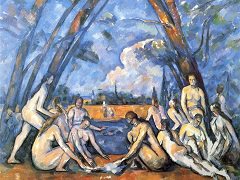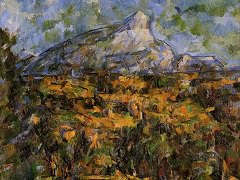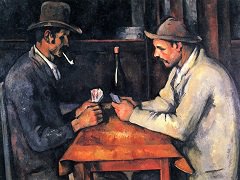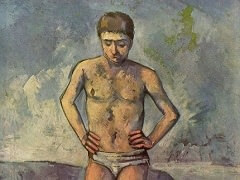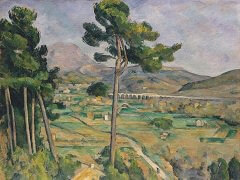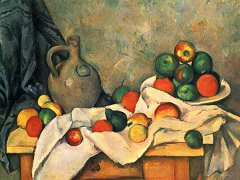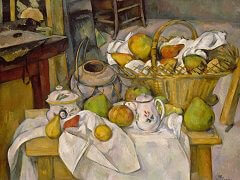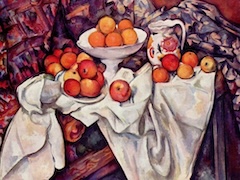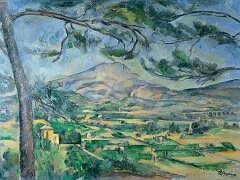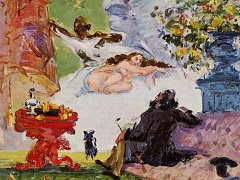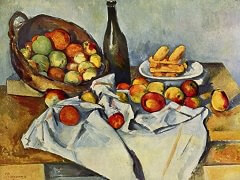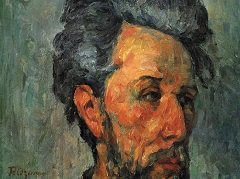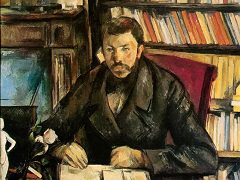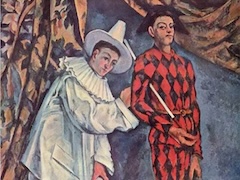Castle of Marines, 1890 - by Paul Cezanne
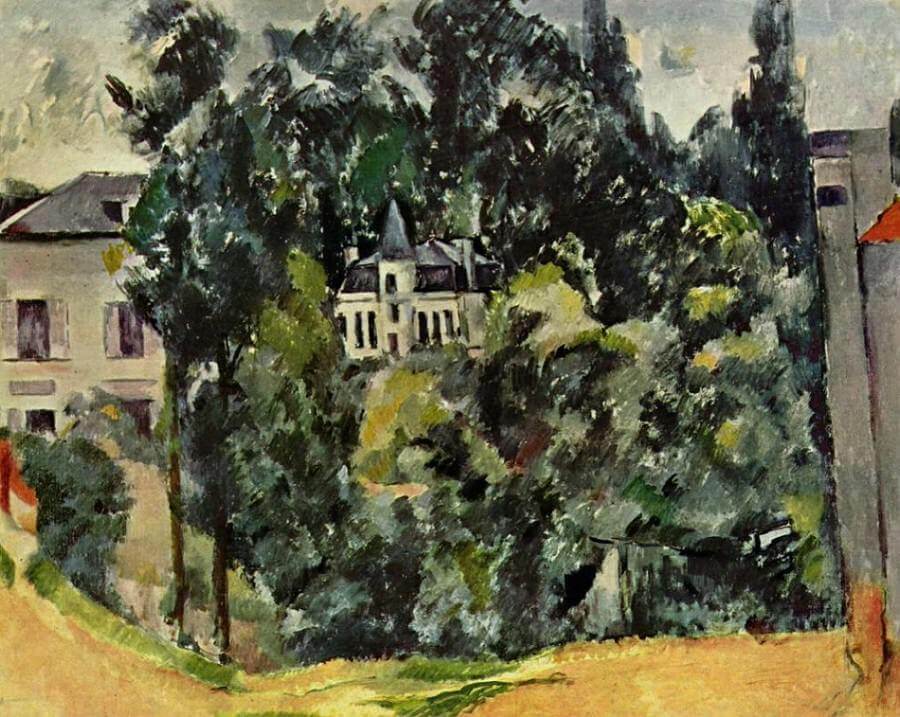
A sketch, thinly painted picture, remarkable for the motif and the intellectual approach. It is an imaginative treatment of perspective, in which Cezanne experiments with depth and surface, freely adjusting the sizes of things to compositional and expressive ideas, without giving up altogether the perspective phenomenon. He plays with the latter paradoxically; just as in other works he makes the distant objects larger than in normal appearance, here he makes a fairly near object - the central building - so small that we judge it to be far away. At the same time he reverses the conception of his "Road at Chantilly". There he concentrated on a building seen incompletely at the end of a barred path; here the whole building - cut off from us by the bushes in the foreground - is visible in the center, but the image is expanded at the sides, and the larger segments of buildings at the periphery of the visual field compete with the object in the middle.
The strongest accents of color are two exceptionally bright vermilion spots attached to the buildings at the sides. The central house, very tiny beside the others, seems to belong to a different perspective, as though it were a picture within a picture, a montage. In this odd game of vision, the centrally focused is devalued; what is diminished by perspective is also the emotionally distant - it is a doll's house, enclosed by thick vegetation. Only the lateral buildings can be approached directly from the road. Yet in form this apparently tiny building is a synthesis of the large ones; its vertical tower and horizontal wings combine the separated vertical and horizontal dominants of the others.
We are reminded of the Impressionist device of placing an enlarged object at the side and cutting it by the frame. But Renoir would treat the object as if seen from the side or from the corner of the eye, whereas here we have symmetry and a central focus. It is as though Cezanne wished to produce the effect of something seen directly before him, yet less important for the observer than what lay at the sides, near and incomplete. An exaggerated perspective here becomes a means of detachment.
There is another equally interesting aspect of paradoxical vision and spacing: the three buildings, of very different quality and in distinct planes in depth, are united through the mass of trees which lies between them. The outline of the daringly tilted building at the right is prolonged in the edge of a tree - a distant tree on the horizon - which by this device is tied to the foreground, to the yellow path below. The same tree belongs to the shapeless mass above and behind the central house, merging at the left with trees that rise from trunks in the foreground. Undoubtedly, these trees would have been more sharply distinguished in their color from the more distant ones, had Cezanne finished the picture; but the idea of a continuity between the near and the far through common edges and parallels would have been preserved.
These paradoxes of the visual - an emancipation from old habits of seeing - are justified finally by the harmony of the pictorial effect and by the fascination of the image, which has a certain truth to feeling in evoking the rivalry between the central and marginal in vision.

